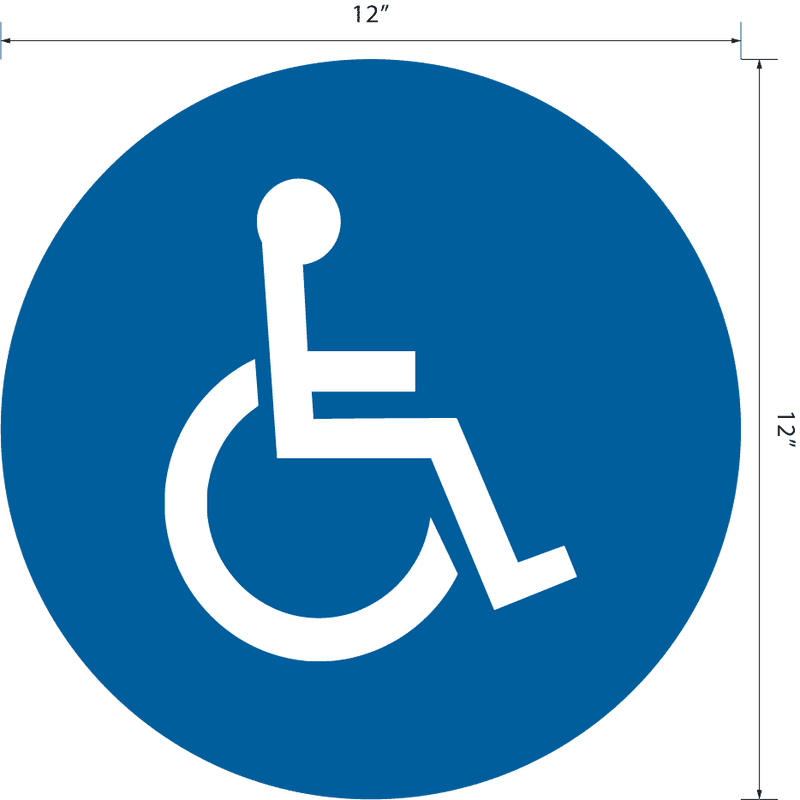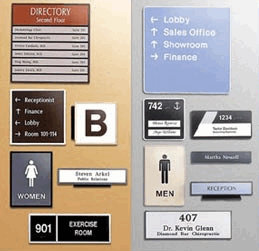A Comprehensive Overview to Selecting the Right ADA Signs
A Comprehensive Overview to Selecting the Right ADA Signs
Blog Article
Discovering the Trick Attributes of ADA Indications for Improved Availability
In the world of availability, ADA indicators serve as quiet yet powerful allies, making sure that spaces are inclusive and accessible for people with impairments. By incorporating Braille and tactile aspects, these indicators break barriers for the aesthetically impaired, while high-contrast color systems and legible font styles provide to diverse visual demands.
Significance of ADA Conformity
Making certain compliance with the Americans with Disabilities Act (ADA) is essential for promoting inclusivity and equivalent access in public rooms and offices. The ADA, enacted in 1990, mandates that all public facilities, companies, and transport services accommodate individuals with handicaps, ensuring they delight in the exact same civil liberties and possibilities as others. Compliance with ADA standards not only meets legal obligations but also enhances an organization's track record by showing its dedication to variety and inclusivity.
One of the key facets of ADA conformity is the application of accessible signs. ADA indications are developed to guarantee that people with specials needs can quickly navigate via rooms and buildings.
Moreover, sticking to ADA guidelines can reduce the risk of lawful consequences and potential penalties. Organizations that fail to abide with ADA standards may face penalties or suits, which can be both harmful and monetarily troublesome to their public image. Therefore, ADA conformity is essential to cultivating an equitable setting for everyone.
Braille and Tactile Components
The unification of Braille and tactile aspects right into ADA signage symbolizes the concepts of availability and inclusivity. These attributes are vital for people who are blind or aesthetically damaged, allowing them to browse public spaces with higher freedom and confidence. Braille, a responsive writing system, is important in supplying written info in a style that can be conveniently perceived with touch. It is commonly placed below the equivalent message on signage to guarantee that people can access the details without aesthetic assistance.
Responsive components expand past Braille and consist of increased symbols and personalities. These parts are made to be noticeable by touch, permitting people to determine space numbers, washrooms, leaves, and other important areas. The ADA sets particular guidelines regarding the dimension, spacing, and positioning of these tactile elements to maximize readability and make sure consistency across various atmospheres.
High-Contrast Color Design
High-contrast color pattern play a crucial function in enhancing the exposure and readability of ADA signage for people with visual disabilities. These schemes are crucial as they make the most of the distinction in light reflectance between message and background, making certain that indications are easily noticeable, also from a distance. The Americans with Disabilities Act (ADA) mandates using particular shade contrasts to accommodate those with minimal vision, making it an important facet of compliance.
The efficiency of high-contrast colors hinges on their capacity to stand apart in numerous lights problems, consisting of poorly lit settings and areas with glow. Usually, dark message on a light history or light message on a dark history is utilized to achieve optimum contrast. Black message on a yellow or white background offers a plain check out this site aesthetic distinction that aids in quick recognition and understanding.

Legible Fonts and Text Dimension
When considering the design of ADA signage, the choice of legible fonts and appropriate message dimension can not be overemphasized. The Americans with Disabilities Act (ADA) mandates that font styles should be sans-serif and not italic, oblique, script, very attractive, or of uncommon type.
The size of the text also plays a critical function in availability. According to ADA guidelines, the minimal text height need to be 5/8 inch, and it needs to boost proportionally with seeing distance. This is especially crucial browse around this site in public spaces where signage demands to be checked out rapidly and accurately. Uniformity in text dimension adds to a cohesive aesthetic experience, helping people in browsing environments successfully.
Additionally, spacing between lines and letters is important to legibility. Appropriate spacing prevents personalities from appearing crowded, improving readability. By adhering to these requirements, developers can considerably improve availability, guaranteeing that signs serves its designated objective for all individuals, despite their visual abilities.
Reliable Placement Strategies
Strategic placement of ADA signage is necessary for maximizing accessibility and making sure conformity with legal requirements. Appropriately located signs assist people with disabilities efficiently, assisting in navigating in public rooms. Key considerations include distance, presence, and elevation. ADA guidelines stipulate that signs should be mounted at an elevation between 48 to 60 inches from the ground to guarantee they are within the line of view for both standing and seated individuals. This basic height range is crucial for inclusivity, allowing wheelchair individuals and individuals of varying heights to access information effortlessly.
Additionally, indications should be positioned nearby to the lock side of doors to enable easy recognition before entrance. Consistency in indication placement throughout a center enhances predictability, minimizing confusion and enhancing overall individual experience.

Conclusion
ADA signs play an important duty in advertising ease of access by integrating functions that attend to the needs of people with disabilities. These components jointly foster a comprehensive setting, highlighting the significance of ADA conformity in ensuring equal accessibility for all.
In the realm of ease of access, ADA indicators serve as quiet yet powerful allies, making certain that spaces are inclusive and navigable for individuals with specials needs. The ADA, established in 1990, mandates that all public centers, companies, and transport solutions fit people with disabilities, ensuring they delight in the same rights and chances as others. ADA Signs. ADA indicators are created to make certain that people with specials needs can quickly navigate through rooms and buildings. ADA guidelines state that signs ought to be placed at an elevation between 48 to 60 inches additional info from the ground to ensure they are within the line of sight for both standing and seated individuals.ADA indications play an essential role in promoting ease of access by integrating attributes that deal with the demands of people with impairments
Report this page